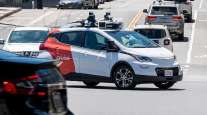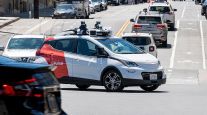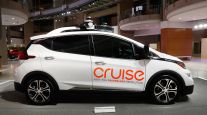GM’s Self-Driving Expansion Faces Challenges in San Francisco
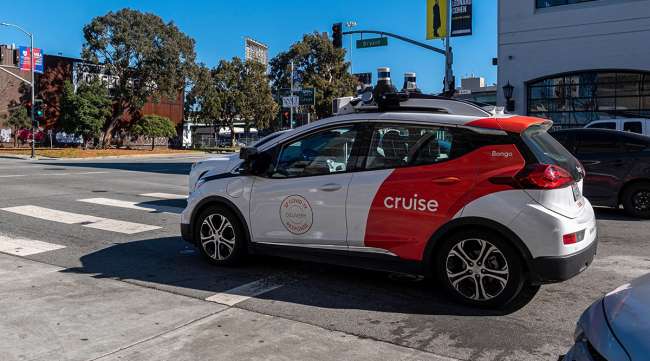
[Stay on top of transportation news: Get TTNews in your inbox.]
In its push to get to $1 billion in robotaxi revenue by 2025 and as much as $50 billion by 2030, General Motors-owned Cruise is working to expand its paid service to all of San Francisco and run it 24 hours a day.
The California Public Utilities Commission is weighing the company’s request. Right now, Cruise takes fares in one-third of the city from 10 p.m. to 5:30 a.m.
To demonstrate the safety of its service, Cruise points to recently released data showing the robotaxi provider did 2,800 rides covering 27,000 miles without a major collision or injury from September through November, its most recent reporting quarter. The company has run almost 1 million fully driverless miles in the city without any serious injuries to its passengers and says its self-driving cars are safe.
Not so fast, one San Francisco authority says. The San Francisco Municipal Transportation Agency filed a brief opposing Cruise’s plans on Jan. 25, saying it found 92 incidents in the last seven months of 2022 when Cruise’s autonomous vehicles obstructed traffic, caused delays to transit services, clogged up bus lanes or — in two cases — interfered with firefighters. The agency’s chief complaint is that Cruise AVs will make unplanned stops in inconvenient places and be a nuisance for buses and motorists.
It’s a problem for Cruise that a major stakeholder in its hometown — where it employs more than 3,000 highly skilled staff — is trying to hold up its expansion. Anything that slows Cruise’s progress in making the jump from an AV developer to a substantial revenue-generating business delays any payoff for GM, which has been plowing about $2 billion a year into the startup.
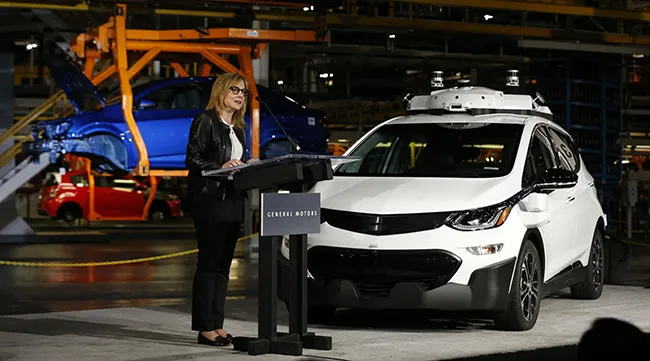
General Motors CEO Mary Barra next to a self-driving Chevy Bolt in 2017. (Jeff Kowalsky/Bloomberg News)
GM CEO Mary Barra has a lot riding on Cruise. The automaker has downsized dramatically since she took over the top job nine years ago, pulling out of Europe and shutting down operations in countries including India, Australia and South Africa.
Cutting bait in markets where GM was losing money or making anemic returns freed up funds Barra has diverted to investments in AV development and electric vehicles. Both those bets are taking longer than expected to pay off, with Cruise likely being years away from profits and GM’s newest Ultium-based electric vehicles selling in trace amounts last year.
To be sure, SFMTA has long fought robotaxis, as well as Uber and Lyft’s human-operated ride-hailing services. The COVID-19 pandemic has hammered ridership, and the last thing SFMTA needs is more competition for the buses and taxis it regulates. The agency has stood in the way of both Cruise and Alphabet’s Waymo in the past.

Host Seth Clevenger speaks with autonomous vehicle pioneer Don Burnette about the pros and cons of driverless cars and trucks. Hear the program above and at RoadSigns.TTNews.com.
Third of a three-part series on autonomous vehicles. Hear Part I here, and Part II here.
Setting SFMTA’s self-interest aside, it makes some valid points. While Cruise’s vehicles have thus far avoided crashes resulting in serious injury or deaths, they do occasionally get confused. When its robotaxis encounter a situation they can’t navigate, the cars pull over and stop. This is by design, but has created problems for human drivers and transit vehicles. These very smart cars are still capable of doing things humans consider dumb.
Among SFMTA’s complaints were two incidents in which a Cruise AV ran over a fire hose while firefighters were at the scene of an emergency. One was in June, and the other was in January of this year, according to the filing.
In one of the incidents, firefighters had to break the window of Cruise’s car. A spokesman for the company said the car recognized the fire, pulled over and shut down, and company staff showed up later to move the vehicle.
When brainy engineers and entrepreneurs started working on autonomy over a decade ago, they predicted robotic driving would improve road safety and reduce congestion. These cars largely have delivered from the safety record perspective. Now, they need to learn to drive safely without causing traffic jams.
Want more news? Listen to today's daily briefing below or go here for more info:


